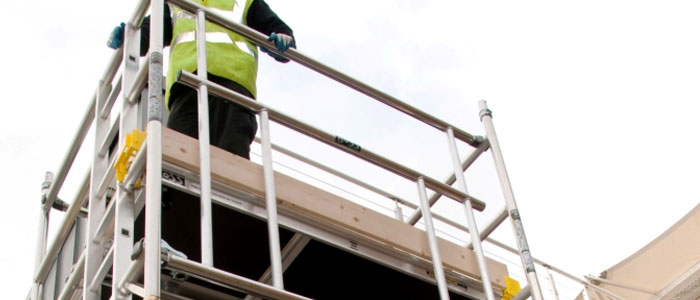AGR (Advanced Guard Rail) and 3T (Through The Trapdoor) Advantages for Safety

Advanced Guard Rails (AGR)
Mobile Access Towers (MATs) are accepted as being significantly safer than ladders when working at a height and few people would argue that they give a more stable and more efficient working platform for almost any kind of job above ground level. There is a danger inherent in the system, however, and this is that the tower has to be assembled and at that stage, all of the guard rails and other safety features are not in place and so there is a risk of falling at this point.
There are several methods of building which can counteract this threat and both have their proponents. Because there has been no HSE (Health and Safety Executive) decision on this until now, which one to use has been a matter of personal opinion, so everyone involved in working at a height will be pleased to know that the final analysis is that they both give an advantage to workers whilst assembling MATs. Both methods are always covered in PASMA training course (Prefabricated Access Suppliers and Manufacturers Association).
AGR
Advance guard rails are temporary rails which can be assembled on the next level above the one on which the assembler is standing. This means that no one is ever exposed to the danger of falling by standing on an unguarded platform.
As each level is assembled, a permanent guard rail is added in place of the AGR, which is moved up to the level above. This method is very simple to use and means that there is always a rail in place, so if the assembly is paused for some reason, anyone can access the tower without danger. Anyone hiring a mobile access tower should check in advance whether AGRs are included in the price of hire – waiting until delivery is unwise as it is not recommended that anyone assembles a tower without either AGR or through the trap assembly options.
3TM
The 3T or through the trap (or trapdoor) method is another way of assembling a tower without the assembler being at risk of falling. The next level can be fully assembled without the worker being fully at that level, because they do all the work through a trapdoor in the floor of that level (the ‘ceiling’ of the one below). The introduction of AGR has been a more recent development and many people whose safety training is a few years old may only have the 3T method in their portfolio although new training always includes both methods.
There has not been a definitive decision on which is best, but everyone has their preference. The main thing to remember is that working at a height is the most risky part of the construction industry, accounting for more fatal accidents every year than any other single cause. Using either 3T or AGR in conjunction with appropriate harnesses and other safety equipment could in theory reduce the number of accidents of this nature to zero.